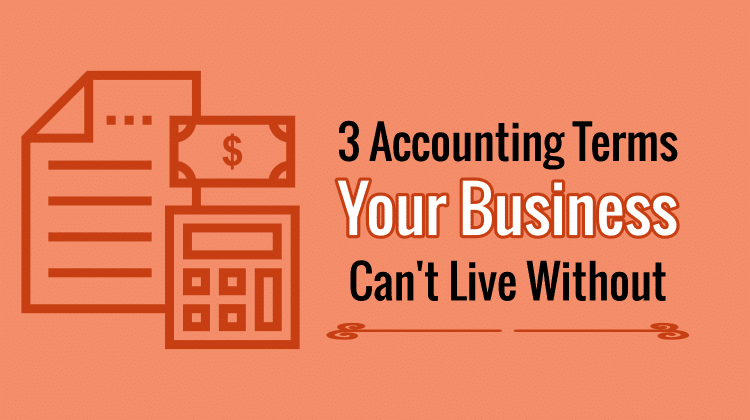
Avoided Accounting 101? Does the thought of interpreting financial statements make you cringe?
You don’t want anyone to mislead you, or worse, take your hard-earned money right under your nose just because you didn’t understand key financial concepts. You need to be able to comprehend the importance of the accounting information that your CPA shares with you.
Here are 3 accounting terms that you should know to understand your CPA and appear financially competent:
1. Gross Margin Helps Determine Profit
Your recently purchased manual for new entrepreneurs probably didn’t emphasize the importance of gross margin, and your business could be negatively impacted if you are oblivious to this number. This number will help drive many key business decisions such as pricing and promotion. It will also help you to determine the value of incremental sales.
In accounting lingo, gross margin is revenue minus cost of goods sold, expressed as a percentage. Gross margin is the amount of money you receive when you sell a product or service (selling price) minus all of the variable and fixed costs that are directly linked to the product sold. Your costs may include labor, production, and acquisition costs.
Gross margin tells you what percentage of your price is your profit. For example, let’s say your business collects $100,000 in sales revenue. You spend $40,000 on labor costs and $20,000 on manufacturing supplies. Therefore, your gross profit is sales revenue ($100,000) minus cost of goods sold ($60,000) which is $40,000. Your gross margin is gross profit ($40,000) divided by sales revenue ($100,000) which equals 0.4, and when multiplied by 100, that becomes 40%.
This calculation means that your company retains $0.40 from each dollar of revenue generated. The company is free to allocate the rest of the money toward expenses. Since cost of goods have already been considered, the remaining funds can be used to pay off debts, interest expenses, administrative expenses, and distributions to shareholders.
2. Liquidity Ratio Helps Evaluate Cash on Hand to Meet Obligations
Have you given your business a financial check-up? You can start by calculating the liquidity ratio. This ratio measures your ability to pay bills when they are due. And we all know that’s important if you are trying to avoid the “untrustworthy payee list”. Ask yourself: Do I have enough cash on hand to meet my short term obligations when they are due?
You can start by using the current ratio to get a better picture of your company’s liquidity; the current ratio shows the proportion of your current assets to current liabilities. Current assets are balance sheet accounts such as cash and cash equivalents, accounts receivable, and marketable securities that can be converted into cash within a year. Current liabilities are balance sheet accounts such as accounts payable, accrued compensation, and deferred revenues that are due within one year of the balance sheet date.
If your current assets balance is relatively large compared to your current liabilities balance, you have some assurance that your bills that are due can be paid on time.
3. Retained Earnings is a Balance Sheet Accounting Term
Retained earnings is what the company keeps after all dividends have been paid to shareholders. Ending retained earnings is calculated as beginning retained earnings plus profits/losses minus dividends. The retained earnings balance is reported in the stockholders’ equity section of a company’s balance sheet.
If you’ve just started your company, you probably won’t be issuing dividend payments to your shareholders. A new company may use its retained earnings to fund growth opportunities. These business expansion opportunities include research and development, marketing, and working capital. You may have also accumulated a lot of debt while trying to fund your business, so you have used retained earnings to pay it off. Maybe you want to hold some of your retained earnings in reserves in order to prepare for unexpected losses.
As your company grows larger and stronger, you may have more flexibility to pay out dividends to your shareholders.

